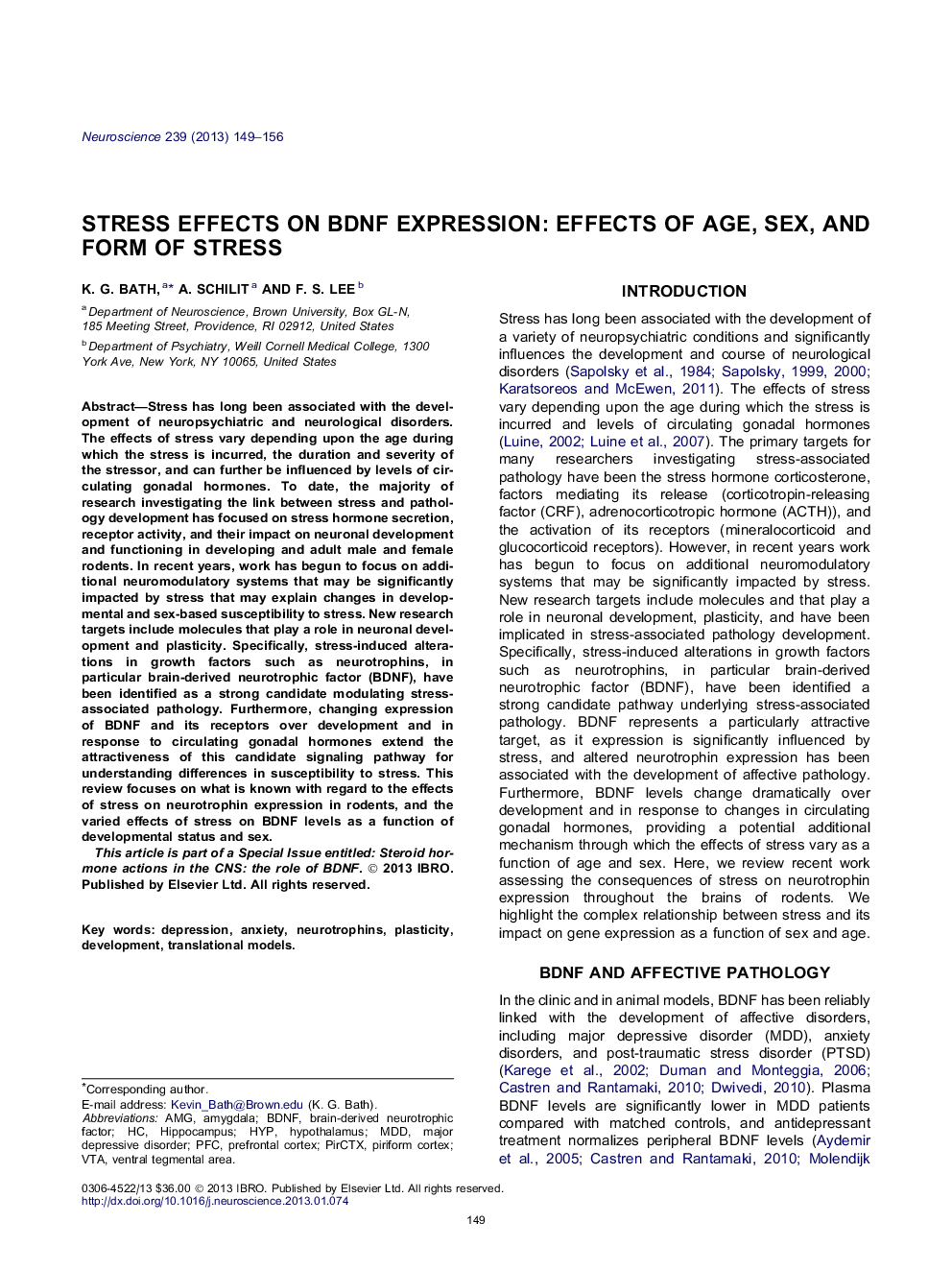| Article ID | Journal | Published Year | Pages | File Type |
|---|---|---|---|---|
| 4338021 | Neuroscience | 2013 | 8 Pages |
Stress has long been associated with the development of neuropsychiatric and neurological disorders. The effects of stress vary depending upon the age during which the stress is incurred, the duration and severity of the stressor, and can further be influenced by levels of circulating gonadal hormones. To date, the majority of research investigating the link between stress and pathology development has focused on stress hormone secretion, receptor activity, and their impact on neuronal development and functioning in developing and adult male and female rodents. In recent years, work has begun to focus on additional neuromodulatory systems that may be significantly impacted by stress that may explain changes in developmental and sex-based susceptibility to stress. New research targets include molecules that play a role in neuronal development and plasticity. Specifically, stress-induced alterations in growth factors such as neurotrophins, in particular brain-derived neurotrophic factor (BDNF), have been identified as a strong candidate modulating stress-associated pathology. Furthermore, changing expression of BDNF and its receptors over development and in response to circulating gonadal hormones extend the attractiveness of this candidate signaling pathway for understanding differences in susceptibility to stress. This review focuses on what is known with regard to the effects of stress on neurotrophin expression in rodents, and the varied effects of stress on BDNF levels as a function of developmental status and sex.
► Review recent work on the effect of stress on brain neurotrophin expression in rodents. ► Compares effects of ages, sex, brain region, and type of stressor on BDNF levels. ► Highlight key areas where more research is needed.
